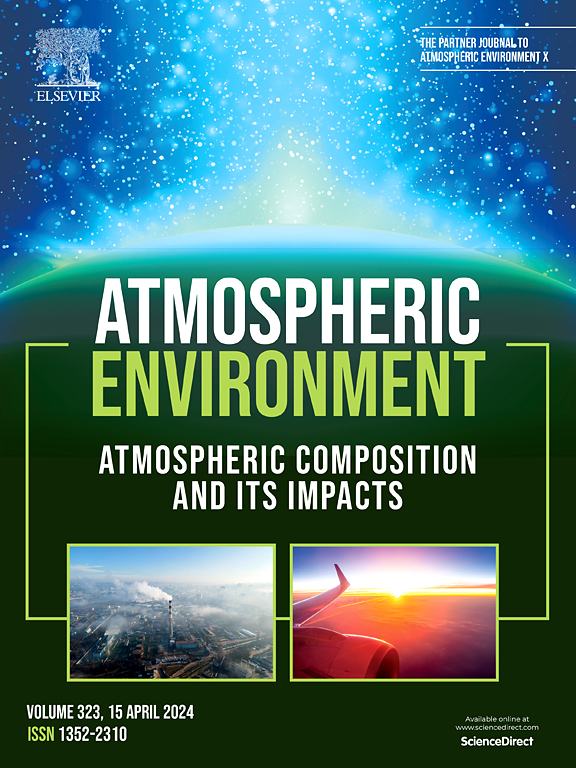Lower atmospheric profiling for climate studies pertaining to aerosols, radiation and turbulence using Unmanned Aerial System in India: Initial results
IF 4.2
2区 环境科学与生态学
Q2 ENVIRONMENTAL SCIENCES
引用次数: 0
Abstract
The lower atmosphere close to the Earth's surface, though crucial for various process studies and models, still remained a gap area for a long. The Indian Institute of Tropical Meteorology (IITM) pioneered in collecting aerosol and cloud data using manned aircraft. However, to fill the data gap in the lower atmosphere, IITM envisaged Unmanned Aerial System (UAS) as an innovative aerial platform and the program ‘Lower Atmospheric Research using Unmanned Aerial System Facility (LARUS)’ is instigated to demonstrate the efficacy of a fixed-wing medium size UAS for probing the lower atmosphere for climate studies. The UAS is equipped with lightweight advanced science payload and an isokinetic aerosol inlet, for targeted in-situ measurements of aerosol, chemistry, radiation, turbulence and meteorological parameters (temperature (T) and Relative Humidity (RH)). The vertical profiles on different flight days depicted high vertical diurnal variability of the measured parameters. Comparison of T & RH profiles of INSAT-3DR Sounder and UAS depicted huge data gap in satellite profiles in the lower altitudes. The new approach in our study is obtaining high frequency simultaneous in-situ measurements within the footprint of 5 km with high vertical resolution to study local atmospheric processes.
The data emphasises elevated absorbing aerosol layers (AAL) or haze layers with maximum absorption up to 500 m above the ground due to local anthropogenic activities. The sample filter papers revealed the type, source and morphology of the observed aerosols. The incoming and reflected (outgoing) shortwave radiation indicated distinct features with an albedo of 0.178 above the haze layer (at 500 m) and 0.017 at the surface and solar absorption of 70 W/m2 in the layer 0–500 m. The presence of haze also influenced the turbulence parameters (u, v, w) and Turbulent Kinetic Energy (TKE) at those altitudes. This study demonstrates instrumented UAS for lower atmospheric research, the first of its kind in India, highlighting various results essential for climate studies.

在印度使用无人机系统进行与气溶胶、辐射和湍流有关的气候研究的低层大气剖面:初步结果
接近地球表面的低层大气虽然对各种过程研究和模型至关重要,但长期以来仍然是一个空白区域。印度热带气象研究所(IITM)率先使用有人驾驶飞机收集气溶胶和云数据。然而,为了填补低层大气的数据空白,IITM设想无人机系统(UAS)作为一个创新的空中平台,并启动了“使用无人机系统设施(LARUS)进行低层大气研究”计划,以证明固定翼中型无人机在探测低层大气以进行气候研究方面的有效性。UAS配备了轻型先进科学有效载荷和等速气溶胶入口,用于有针对性的气溶胶,化学,辐射,湍流和气象参数(温度(T)和相对湿度(RH))的原位测量。不同飞行日的垂直剖面描述了测量参数的高垂直日变率。T &;INSAT-3DR探测仪和UAS的相对湿度剖面图显示了较低高度卫星剖面图的巨大数据差距。我们研究的新方法是在5公里的足迹范围内以高垂直分辨率获得高频同时原位测量,以研究当地大气过程。资料强调由于当地人为活动,吸收气溶胶层(AAL)或雾霾层升高,其最大吸收率高达地面以上500米。样品滤纸揭示了所观察到的气溶胶的类型、来源和形态。入射和反射(出)短波辐射表现出明显的特征,霾层上方(500 m)反照率为0.178,地表反照率为0.017,0-500 m层太阳吸收率为70 W/m2。霾的存在也影响了这些高度的湍流参数(u、v、w)和湍流动能(TKE)。这项研究展示了用于低层大气研究的仪器化UAS,这是印度首个此类研究,突出了对气候研究至关重要的各种结果。
本文章由计算机程序翻译,如有差异,请以英文原文为准。
求助全文
约1分钟内获得全文
求助全文
来源期刊

Atmospheric Environment
环境科学-环境科学
CiteScore
9.40
自引率
8.00%
发文量
458
审稿时长
53 days
期刊介绍:
Atmospheric Environment has an open access mirror journal Atmospheric Environment: X, sharing the same aims and scope, editorial team, submission system and rigorous peer review.
Atmospheric Environment is the international journal for scientists in different disciplines related to atmospheric composition and its impacts. The journal publishes scientific articles with atmospheric relevance of emissions and depositions of gaseous and particulate compounds, chemical processes and physical effects in the atmosphere, as well as impacts of the changing atmospheric composition on human health, air quality, climate change, and ecosystems.
 求助内容:
求助内容: 应助结果提醒方式:
应助结果提醒方式:


